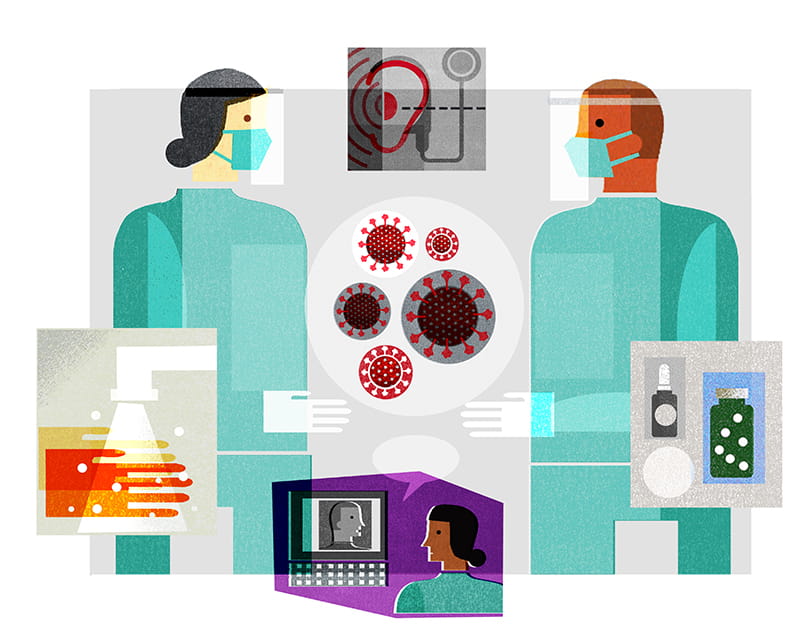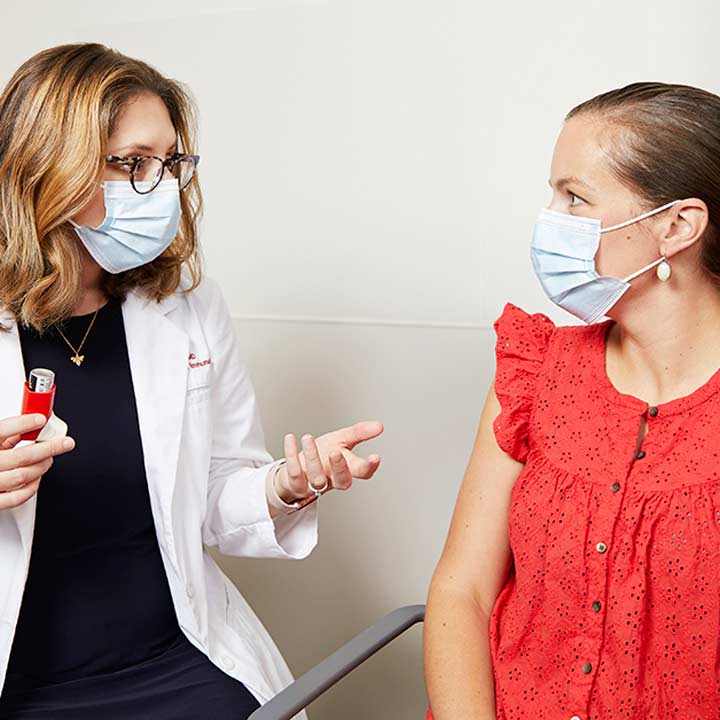
2020 Annual Report
 At this point, it seems as though there’s a tech solution for everything.
In this case, the tech is software called the Rosch Visionary System. It’s one of the few software options that can help organize allergy shots and files. This software was developed to make practicing allergy care more efficient over time. For clinicians at The Ohio State University Wexner Medical Center, it’s provided a new avenue to support patients in a growing practice.
At this point, it seems as though there’s a tech solution for everything.
In this case, the tech is software called the Rosch Visionary System. It’s one of the few software options that can help organize allergy shots and files. This software was developed to make practicing allergy care more efficient over time. For clinicians at The Ohio State University Wexner Medical Center, it’s provided a new avenue to support patients in a growing practice.
“We’ve been looking forward to this solution for a while,” says Casey Curtis, MD, interim director of the Division of Allergy and Immunology in the Ohio State Department of Otolaryngology – Head and Neck Surgery. “Implementing new tech solutions to improve quality of care is exciting.”
When the electronic medical record (EMR) system Epic was first implemented at the Ohio State Wexner Medical Center, allergy providers used custom additions to track a patient’s allergic history and medications. They also kept handwritten notes within the clinic. These workarounds helped the allergy team for a time but became cumbersome as the practice grew in capacity and number of locations.
“What we had in terms of processes, workarounds and record keeping was putting a strain on the staff, especially on our nurses,” Dr. Curtis says. “Those kinds of inefficiencies create safety concerns, which made finding a solution to streamline, organize and make data more accessible imperative.”
The Rosch Visionary System integrates into Epic and keeps track of all allergy patient data: what they’re allergic to, what concentration of allergy doses they’re taking and what they’ve been tested for in the past. These details will be shared and available at all clinic locations, which will help the team track patient information more easily.
“Our team’s role was advocating to make this change from a safety and patient satisfaction standpoint,” Dr. Curtis says. “Our goal is to aid providers and better support patients by providing a more efficient system and improving patient safety.”
As Ohio State expanded its allergy operations to provide care to more patients in more neighborhoods throughout central Ohio, the need for an integrated solution to track allergy shots became clear.
Tiffany Owens, MD, an allergist in the Department of Otolaryngology – Head and Neck Surgery, was critical in advocating for the new software. She had utilized the Rosch system previously and helped the staff understand its benefits. The nursing team and Ohio State IT also played important roles in identifying and implementing the solution.
“This is the right solution for the right time. The old system isn’t as effective when you can’t run across the hall to get a patient file,” Dr. Curtis says. “This solution enables access to information from multiple areas to support patients.”
Immunotherapy for environmental allergies can improve quality of life by reducing symptoms of exposure even when patients are done with their allergy shots. From a venom standpoint, shots can be lifesaving if patients are stung again.
“The software significantly reduces room for error,” Dr. Curtis says. “While our team has always prioritized safety, we can now free up a lot of time by automating these processes.”
For example, in the case of allergy shots, the team might have previously used several different systems for one process. Now, providers can use barcodes and patient bracelets to make sure that the right patients get the right dose on the right date – all in one centralized, integrated system.
“Our staff does a great job of making sure things are correct, but this is an extra safety net,” Dr. Curtis says. “There is less for nurses to document, a quicker time to injection for patients and faster shot appointments. We can also track historical reactions and use data to identify how to prevent issues in the future.”
Not only does this software empower improved patient safety, but it also has the potential for better outcomes.
“From an internal quality assurance or research perspective, we can look at all of our cases of adverse reactions and use aggregate data to understand particular reactions,” Dr. Curtis says. “We can use this data to see patterns of reactions and conduct QI projects to improve our practice in safety.”
This software also brings extra peace of mind for both patients and providers and could pave the way for more tech-enabled solutions in the future to support safety and efficiency.
“With more centralization, there is less chance of things getting lost,” Dr. Curtis says. “This is just one step in that direction. We’re working on implementing tech in a smart way to make things more personalized, safer and effective for the patients we serve.”